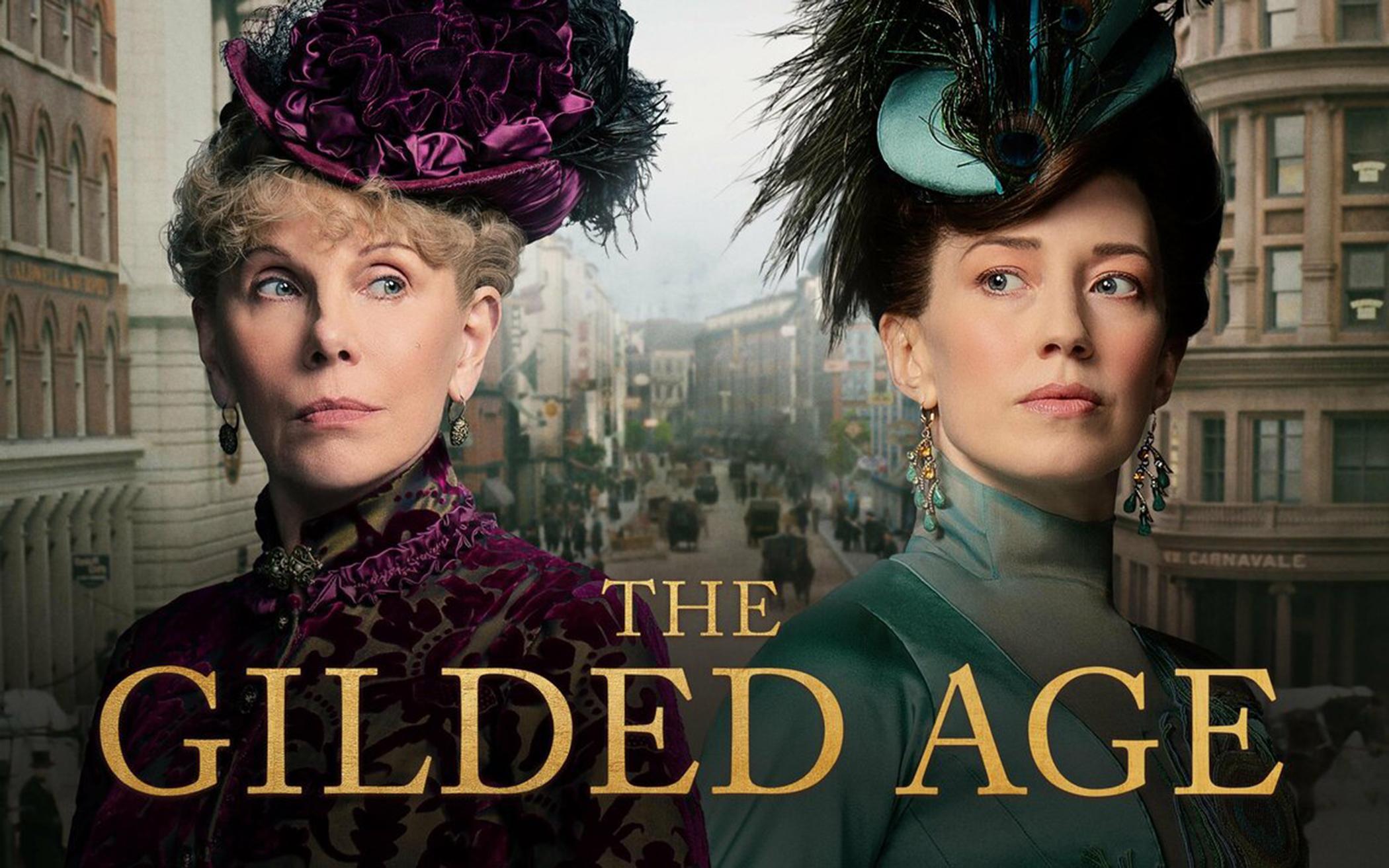It’s the old-money Astors versus the new-money Vanderbilts in Julian Fellowes’ ode to America’s glittering late 19th century in The Gilded Age.
Fellowes, creator and showrunner of Downton Abbey, takes his lush, sudsy storytelling style across the ocean and a few decades earlier to showcase the clash of financial titans, both with one another and with their servants. (Yes, there is an upstairs/downstairs element here, but clearly the upstairs characters get much more airtime.)
I was such a fan of Downton Abbey that it was impossible not to compare and contrast the two series, which are similar and also different, for good and for bad.
The biggest difference, to me, was the fact that Gilded, a property of HBO (now called Max), is quite a bit racier than its Downton predecessor on PBS. While the vast majority of the series is PG or PG-13, viewers may want to have their remotes handy in case they should want to fast forward through the one gratuitous, lengthy nude scene several episodes in, or the handful of other salacious scenes. Otherwise, this series is a lesser Downton in puffed sleeves and with an American accent.
On the positive side, The Gilded Age is replete with stellar acting (Broadway heavyweights Carrie Coon, Nathan Lane, and Audra MacDonald turn in powerful performances). I watched the entire series without knowing that Marian, the naive and kindly middle-class niece of two rich aunts, was played by Meryl Streep’s daughter, Louisa Jacobson. Jacobson gently imbues Marian – caught between the commonplace world she grew up in and her family’s complicated, affluent heritage – with a wide-eyed yet intelligent grasp on the world around her. As for Marian’s aunts – Agnes, played acerbically by the always-potent Christine Baranski, and the timid Ada (Cynthia Nixon) – it seems obvious that Fellowes was trying for a Dowager Violet Crawley vibe, ala Downton, but inevitably fails. No one can compare to Dame Maggie Smith in the tart one-liners department or, really, any other department.
Another plus is that The Gilded Age grapples with race relations in a way that Downton never attempted. The series begins with Marian meeting Peggy Scott (Denée Benton) who is Black, on the train enroute to New York City and her aunts. Both young women must confront the realities of racial constructs in post-civil war America as their friendship evolves.
Back to the real-life Astors and Vanderbilts: It is fascinating to watch the drama unfold between the venerable Astors and the socially ambitious Vanderbilts, referred to here as the Russells. Carrie Coon’s Bertha Russell positively bristles with aspiration as she maneuvers – and sometimes elbows – her way into gaining the necessary social capital to enter the upper crust echelon she so desires.
Like Downton, The Gilded Age largely ignores the reality of a loving God who cares about each human being, rich or poor. Christian viewers may get sucked into Gilded’s propulsive storytelling and glorious costumes, but in the end may even feel sorry for the richest characters, whose lives seem empty and meaningless at times. Even with all the money in the world, this series clearly shows that all that is gilded is not always pure gold. (Rated TV-MA, Max, Hulu and Amazon Prime)
About the Author
Lorilee Craker, a native of Winnipeg, Man., lives in Grand Rapids, Mich. The author of 16 books, she is the Mixed Media editor of The Banner. Her latest book is called Eat Like a Heroine: Nourish and Flourish With Bookish Stars From Anne of Green Gables to Zora Neale Hurston.

